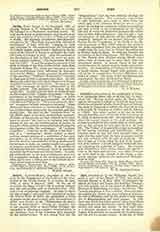

Jaro, Diocese of, in the Philippine Islands, formerly a part of the Diocese of Cebu, was made a separate diocese on May 27, 1865. It comprises the islands of Panay and Negros; the Romblon, Palawan, and Jolo groups, and in the island of Mindanao the Provinces of Zamboanga, Cottabato, and Davao. The Catholic population is over a million. Here and there throughout the diocese are some Aglipayan schismatics, and in Mindanao and the Jolo group a large number of Mohammedans and some pagans. In 1909
there were forty-five native priests, about forty friars (Augustinians and Recollects), twenty Mill Hill missioners, and about ten Jesuits. In Jaro itself there is a diocesan seminary in charge of the Lazarists. Eighty of its students are preparing for the priesthood and the rest for secular careers. In the city of Iloilo the Augustinians conduct a college for lay students. In the towns of Jaro, Iloilo, Zamboanga, and Dumaguete are academies for young ladies, conducted respectively by Spanish and native Sisters of Charity, native Sisters of the Holy House of Mary, and French Sisters of St. Paul of Chartres. The leper settlement of Culion, under government control, is attended by Jesuit priests and brothers, and by the Sisters of St. Paul of Chartres. The churches and parochial residences are generally large, solidly constructed stone buildings, Spanish in architecture. Many of them are very beautiful. Owing to the withdrawal of the Spanish friars at the outbreak of the revolution against Spain (1898), and the present scarcity of priests, some parishes are still vacant. The native language, spoken throughout the greater part of the diocese, is Visayan. But in the island of Mindanao the language spoken is a mixture of Spanish and several native dialects. The educated classes, besides speaking their native dialect, also speak Spanish. Since the American occupation the school children are being taught English. The diocese is the center of the sugar-growing industry, and the planters have always had a predilection for education and culture. Many of the most prominent Filipinos in professional, commercial, and political life are from these parts. Formerly the bishops were Spaniards.
Since 1898 an American bishop presides over the diocese. The first was the Rt. Rev. Frederick Zadok Rooker, consecrated on July 14, 1903, at Rome; d. in 1907. Bishop Rooker was born in New York, September 19, 1861, and made his first studies at Albany and at Union College; later he entered the American College at Rome, and obtained in the College of Propaganda the degrees of Doctor of Philosophy and Doctor of Theology. He was ordained to the priesthood in 1888, and acted as vice-rector of the American College from 1889 to 1894. In 1895 he became secretary of the Apostolic Delegation then recently established at Washington, and held that office until his consecration as Bishop of Jaro.
JAMES P. MCCLOSKEY

